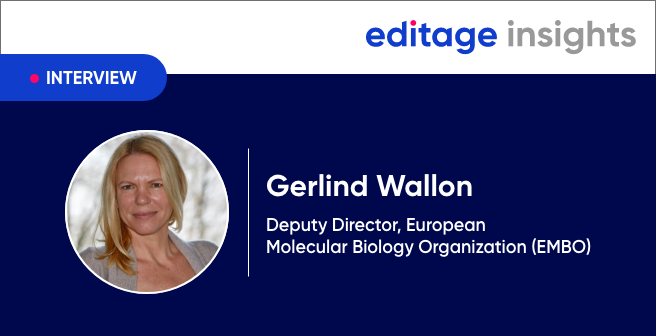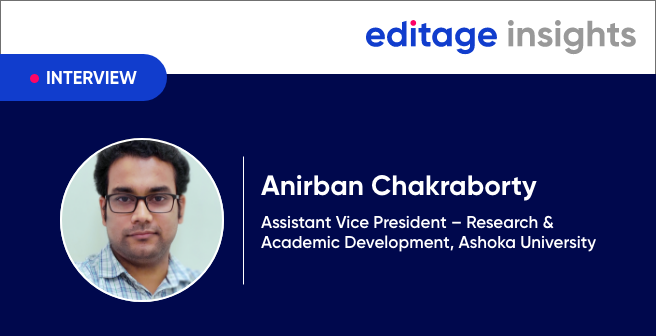Understanding science communication better: A conversation with Barbara Gastel

This is Part 1 of an interview series with Barbara Gastel, science communication specialist, experienced trainer, and acclaimed author.
Most of our interviews are about the journal publishing process and system, trends in publishing, or preparing manuscripts for journal submission. This one stands out, not only because it focuses on science communication as a career option but also because of the way it clarifies the difference between scientific writing and science writing as well as the issues we need to be aware of when it comes to disseminating scientific research to non-academic audiences.
About Barbara Gastel: Barbara Gastel, professor in the Department of Veterinary Integrative Biosciences and the Department of Humanities in Medicine at Texas A&M University, is a well-known name in science communication circles. Barbara coordinates the master’s degree program in science and technology journalism at Texas A&M University. She has extensive experience in academic writing training and in science communication, and she has authored three books: Presenting Science to the Public, Teaching Science: A Guide for College and Professional School Instructors, and Health Writer’s Handbook. She also has authored with Robert A. Day the latest editions of How to Write and Publish a Scientific Paper. In addition, she has published many articles and chapters on writing, editing, teaching, and medical topics. From 2000 to 2010, she edited the Council of Science Editors, periodical, Science Editor.
Barbara’s work experience is rich and varied. After earning a BA from Yale University and an MD and an MPH from Johns Hopkins, she did a AAAS mass media fellowship at Newsweek and took up a communication and administration role at the National Institutes of Health. She has also taught science writing at MIT and has been a visiting professor of technical communication at what is now Peking University Health Science Center. Prior to joining Texas A&M University in 1989, she was assistant dean for teaching at the University of California, San Francisco School of Medicine. From 1996 to 2007, Barbara’s work included helping to direct a program, funded by the China Medical Board of New York, to teach English-language biomedical writing and editing in Asia. She has played lead roles in AuthorAID, a project to help researchers in developing countries to write about and publish their work, ever since its establishment in 2007 at the international development charity INASP.
Barbara has won several accolades, including those from the American Medical Writers Association and the Council of Science Editors. In 2006, she was named an Honored Editor in the Life Sciences by the Board of Editors in the Life Sciences. In 2010, the scientific research society Sigma Xi honored her with the John P. McGovern Science and Society Award. She is also a fellow of the American Association for the Advancement of Science.
About this segment: Part 1 is all about science communication and the roles played by researchers and journalists in ensuring effective, responsible, and ethical science communication. Barbara talks about the various options available to researchers under the broad umbrella of science communication. She also talks about the current issues in science journalism in the US and shares some advice for researchers trying to communicate their research to a non-academic audience.
Could you take us through your professional life and the different roles you have played throughout your career?
Here’s a brief synopsis:
Ever since childhood, I’ve enjoyed both science and communication. Thus, as a student I took many science classes and was active extracurricularly in writing and editing.
On graduating from medical school, I embarked on a career combining my interests in science and communication. I obtained an American Association for the Advancement of Science (AAAS) mass media fellowship, through which I spent a summer helping with the medicine section of Newsweek magazine. I then worked at the National Institute on Aging (part of the US National Institutes of Health) in a position that combined writing, editing, and administration, and I went on to a similar position at the National Center for Health Care Technology. I then worked as a freelance medical writer and editor.
I had long enjoyed teaching, and when an opening arose for a science writing professor, I applied for it. I taught science writing at MIT and then spent two years as a visiting professor of technical communication at what is now Peking University Health Science Center. Upon returning to the United States, I served as assistant dean for teaching at the University of California, San Francisco school of medicine.
Since 1989 I have been a faculty member at Texas A&M University. I coordinate the science communication graduate program and teach in it, and I teach medical humanities at the medical school. I also remain active in international work, such as the AuthorAID project. In addition, I continue to write and edit; for example, I’m lead author of the new edition of How to Write and Publish a Scientific Paper. I enjoy the variety in my work and just wish there were more hours in the day!
What sparked your interest in science communication? What made you so passionate about it?
I’m not sure exactly what sparked my interest. However, even as a youngster, I especially liked reading books and articles on medical and scientific topics. As I grew older, I found that I enjoyed scientific content but that I enjoyed writing and editing more than lab work. Also, I tend to be a generalist, and I like the fact that writing and editing let me learn about many scientific areas rather than focusing on a specific area of research. I also believe that writing about science, and helping others to do so, contribute importantly to society. And for me, science communication—though challenging—is satisfying, rather like doing a puzzle that draws on a wide range of knowledge and skills.
That’s an interesting analogy. Since you mentioned science communication, what are the various career options researchers could explore under the broad umbrella of science communication? At what stage should they start considering these options?
Wow, that’s a big question! In fact, I’ve written chapters on the subject. Briefly, some of the (sometimes overlapping) options are the following:
- Writer or editor for popular media (print, broadcast, or online)
- Public information specialist at a university, research institute, or other institution
- Communication staffer at a professional association in the sciences
- Communication staffer at a science-related company
- Editor at a journal
- Grant-proposal writer
- Editor helping researchers to refine their writing before submission
- Book author or book editor
- Freelance writer or editor
- Teacher of science communication
Often, people serve simultaneously in more than one of these roles or move from one such role to another.
People can start considering such career options at nearly any stage. Occasionally I meet high school students who already are considering science communication careers. Other people start considering these options in college or graduate school, as postdoctoral fellows, or in early or mid-career. Some researchers even start focusing primarily on science communication after retirement. I guess it’s almost never too late.
How would you encourage young/early-career researchers to develop an interest in science communication/journalism?
Young or early-career researchers can develop science communication knowledge and skills in various ways. As a start, I’d recommend reading lots of good science writing. Especially for individuals considering science-communication careers, I’d also suggest reading books and articles on science communication and perhaps taking some classes in this field. If a researcher is indeed seeking such a career, a graduate or certificate program in science communication can be valuable. In addition, I would encourage people to pursue science communication internships. Also, professional organizations, both in science and in science communication, can be a resource for developing science-communication interests, knowledge, and skills and for making contacts in this field. There’s lots out there!
In recent times, there has been a lot of talk about how media misleads the non-academic community by misreporting scientific data or facts. What are your views on this?
This subject is certainly complex. In brief, however, my view is that, overall, the major popular media do a reasonably good job of representing scientific content. Of course, not all media do so, and occasionally even the best media may need to issue minor corrections. I believe that to promote solid reporting of science, researchers need to do their part. Doing so includes being accessible to reporters, presenting content to them in ways well suited for general audiences, and being willing to work with public information staff to promote high-quality coverage.
Journalism is closely tied to the concept of social and ethical responsibility. What are some of the things science journalists need to remember about reporting responsibly and ethically?
This too is a big question. As you may know, some organizations for journalists or specifically for science communicators have codes of ethics. People interested in this topic may find it useful to look at some of these codes. A few things that science journalists should remember about reporting responsibly and ethically are the following: Do your homework; for example, if possible read in depth. Keep asking until you understand; it’s better to seem ignorant to a source than to get something wrong. Remember, though, that you’re writing to serve the public, not to please your source. Strive for accuracy and balance, though realizing that these are complex concepts rather than fully achievable ideals. Resist the easy path of reporting only on items covered in news releases. Keep learning, both about journalism and about science.
In your opinion, what are some of the issues in science journalism today?
Let me mention three issues in the field:
Here in the United States, one serious issue is the downsizing of science reporting staffs at major media. As newspaper revenues have declined, many newspapers have decreased the number of science reporters—or dismissed their only science reporter. As a result, there tends to be less science coverage, especially on the local level, and the coverage tends to be by reporters less qualified to cover science. To me, it would make more sense to decrease the number of sports reporters instead. But among American newspaper readers, apparently more interest exists in sports than in science.
Another issue, at least in the United States, is the fragmentation of the media. For example, whereas previously there were just a few main broadcast networks, now there are almost countless channels. On the plus side, the current situation gives consumers more choice of content and many more hours of science content. But on the minus side, it allows consumers to avoid exposure to science content or even to choose media that misrepresent science, for example by claiming that climate change does not exist or by perpetuating myths about vaccines.
Finally, a longstanding but still timely issue is the role of the science journalist: Is the role of the science journalist to inform? To educate? To entertain? To advocate? To critique? A combination? Sometimes one and sometimes another? Something else? And who should decide? This issue—about which researchers and journalists might sometimes differ—seems unlikely to go away. Perhaps one’s view in this regard influences one’s choice of media to consume.
What is the relationship between academic publishing and science popularization? And how can scientists communicate with journalists effectively?
The relationship between academic publishing and science popularization is complex. However, let me note some aspects. First, academic journals are the source of much of the science news in the popular media. Second, researchers themselves sometimes first learn of new research via the popular media. Third, with the advent of social media, the relationship has become more complex.
A presentation that I gave just last month contained tips for researchers on communicating with journalists. Here are the tips:
- Know about the reporter and venue before deciding whether to accept an interview.
- Find out the assignment and timetable.
- Respond promptly.
- If unavailable, try to suggest someone else.
- Provide visuals and written background.
- Present information as you would to the public.
- If questions are off track, redirect them.
- Tactfully check the reporter’s understanding.
- Offer, but don’t demand, to check drafts.
If you’d like, sometime I can elaborate on these points.
Could you share some advice for researchers trying to communicate their research to the non-academic community?
Conveniently, my presentation last week also contained advice in this regard. Here it is:
- Analyze the audience.
- Relate your content to what people know and care about.
- In general, use simple, common language.
- Define unfamiliar terms.
- Present sizes effectively.
- Include human interest (people).
- Use narrative (storytelling).
- Consider the visual element.
- Provide access to further information.
- Check with the audience.
Sometime I’d be glad to elaborate on these points as well.
Thanks for the tips, Barbara!
Read the next part in the series, where Barbara talks about common manuscript writing mistakes authors make and how these issues can be avoided.



